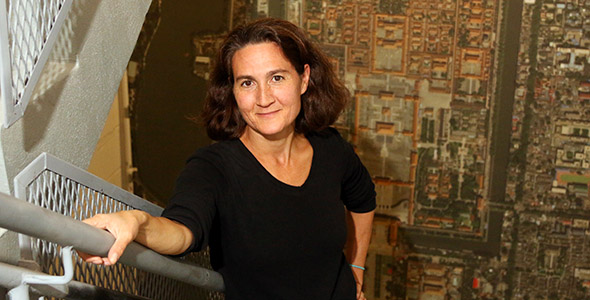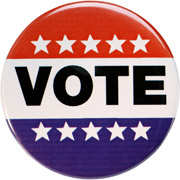ELECTION INSIGHTS 2018
Research-based perspectives from MIT
Jennifer Light | On Social Media and Youth Political Engagement
Bern Dibner Professor of the History of Science and Technology; Director, Program in Science, Technology, and Society; Professor of Urban Studies and Planning

Photo by Allegra Boverman
""Although discussions about youth and new media tend to assume that it is something about the technology itself that is responsible for political and social changes, in fact, the political possibilities associated with contemporary media are highly contingent upon societal power structures."
ELECTION INSIGHTS 2018
Research-based perspectives from MIT
QUESTION
The rise of Facebook and Twitter as influential political platforms has been paralleled by a rise in youth activism. As a historian of technology and politics who has studied the participation of youth in American politics, can you share your insights into how this trend might be affecting the country’s power dynamics? In what ways can historical perspective provide guidance in shaping a media landscape that maximizes democratic participation — by young people and the population as a whole?
COMMENTARY
Current conversations about youth, new media, and political participation — which tend to stress the media technologies themselves as agents of change — would benefit from a deeper understanding of the past. Of course, history doesn’t repeat itself exactly. But historians of technology have identified large-scale patterns around the development and use of past technologies that can provide insights not just for other historians but also for technology users, designers, policy makers, and anyone who cares about the future landscape of political media in the United States.
Young Americans have always been engaged in new media and political life.
With some basic knowledge about the history of youth and "old" media, for example, we begin to see questionable assumptions in contemporary conversations about the social and political implications of new media. One is that 21st century technologies provide unique modes of political expression that are shifting power dynamics. In fact, young people in the United States have always been politically active and have long been early adopters of new technologies. Kids of all ages, including those too young to vote, have been making political media for at least the past 150 years.
In the late 19th century, toy presses sparked a boom in adolescent newspapers and amateur press associations run by kids. In Chicago, for example, more than 40 juvenile newspapers circulated in the 1870s, covering issues including abolition, equal pay for equal work, and female education and suffrage. In the early 20th century, kids used radio to share political ideas. Radio was at that point a communication tool rather than a broadcast technology, and anyone who could build a cheap radio set gained a platform for his or her message (although boys were the dominant users of these technologies). Later in the 20th century, when Sony released its Portapak video system, and communities began to invest in cable infrastructure, young people produced some pretty wild alternatives to television to share their ideas about civil rights, women’s liberation, and other subjects.

"Young people in the United States have always been politically active and have long been early adopters of new technologies. Kids of all ages, including those too young to vote, have been making political media for at least the past 150 years."
Access to new media gives way to gatekeepers.
One implication from these examples for today's conversations is that we should dial down our effusive rhetoric about the novelty of the present moment. More significantly, we should consider the implications of the finding that, in all of these earlier cases, after brief periods in which youth-produced political media proliferated, adult gatekeepers foreclosed these opportunities and returned power dynamics to their previously imbalanced state.
So, a rise in postal rates for amateur publishers led to a drop-off in circulation, because kids found it too costly to send out their newspapers. Radio regulations following the Titanic disaster gave control of that medium to government and business, largely shifting radio spectrum access toward these powerful interest groups. Policies enacted around cable TV similarly discouraged community-access television.
Political possibilities with contemporary media are contingent on power structures.
Young people who used media technologies but did not control media systems found traditional authorities eager to assert control and restrict how these technologies would be used. Media regimes were only temporarily disrupted. Identifying this large-scale historical pattern — which reasonably describes the broader alternative media landscape as much as youth media production — helps us to see that, although discussions about youth and new media tend to assume that something about the technology itself is responsible for political and social changes, in fact, the political possibilities associated with contemporary media are highly contingent upon societal power structures."
These past patterns foreground important choices to be made about media policy and the design of media systems — choices that will determine whether youth political participation in the digital age follows a different path. Examining these patterns also reminds us that history can be an unexpectedly valuable resource for thinking about the future of technology in the United States.
Suggested links
ELECTION INSIGHTS 2018
Research-based perspectives from MIT
Jennifer Light | Webpage
Program in Science, Technology, and Society
Book, News, and Interview
From Voice to Influence: Understanding Citizenship in a Digital Age
University of Chicago Press, 2015
Illuminating Urban Planning
3 Questions with Jennifer Light on New Media and Democracy
MIT historian of technology examines digital citizenship
How to Vote in Every State.
See video with info for your state — and vote!
